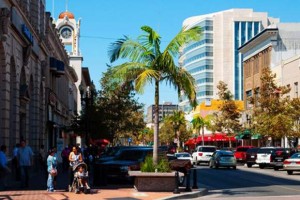Save the date! The City of Santa Ana is holding a community stakeholder meeting to provide information on the current status of Santa Ana’s Climate Action Plan and to discuss the greenhouse gas emissions reduction measures. The meeting is interactive to receive your ideas and priorities on the proposed measures for the Climate Action Plan.
DATE: Thursday, July 24, 2014
TIME: 10:00 a.m. to 11:30 a.m.
PLACE: City Corporate Yard — Large Training Room
220 South Daisy Avenue, Santa Ana 92701
Parking is free
WHO: Local Businesses, Architects/Builders, Community Groups
Please forward this information to others that may want to attend. To learn more about the project, please visit www.santa-ana.org/climateactionplan.
If you plan to attend, please contact Mariann Long at mlong@santa-ana.org or call 714-647-5042.
###
By using our resources wisely, we not only improve the environment but improve the quality of life for our community. The City is developing a Climate Action Plan that will provide a framework for reducing greenhouse gas (GHG) emissions and managing our natural resources. The California Public Utilities Commission has made funding available to those cities with an energy efficiency partnership with Southern California Edison (SCE). Santa Ana has had a partnership with SCE since 2008. The funding covers the Baseline GHG Emissions Inventory and the Energy Chapter of the Climate Action Plan. The funding for the remainder of the components to complete the Climate Action Plan is the responsibility of the City.
The Climate Action Plan will include goals and measures that will move Santa Ana toward becoming a more sustainable city for future generations, while mitigating our impact on the environment. Its success depends on residents, businesses, City Council, and staff to incorporate these actions and measures into daily life and planning processes. Many of the strategies and measures will have positive benefits for the community such as improved air quality, reduced energy use, reduced traffic congestion, reinvestment in the community, and a healthier environment.
The State of California has adopted a wide variety of regulations aimed at reducing GHG emissions. The adoption and implementation of this legislation demonstrates California’s leadership in addressing this critical challenge. The passage of Assembly Bill 32 in 2006 has provided a statewide goal of reducing GHG emissions to 1990 levels by 2020. Senate Bill 375 reduces GHG emissions from automobiles and light trucks through integrated transportation, land use, housing, and environmental planning. In enacting SB 97 in 2007, California’s lawmakers recognized the need to analyze GHG emissions as a part of the California Environmental Quality Act (CEQA) process. SB 97 requires the Office of Planning and Research to develop CEQA guidelines addressing the analysis and mitigation of GHG emissions on proposed projects.
For additional information about the legislative information, please click here: Regulatory Framework
Cities and counties have a unique influence over significant GHG emission sources. Local governments play an integral role in meeting the regulatory commitments and emissions reduction targets through climate action planning.
On behalf of the City of Santa Ana, Mayor Miguel Pulido signed the U.S. Mayors Climate Protection Agreement in 2007. The Agreement urges federal and state governments to enact policies and programs to meet the Kyoto Protocol target of a 7 percent reduction in emissions below 1990 levels. The City of Santa Ana has already taken significant steps to reduce GHG emissions and energy costs generated by governmental operations. By developing new strategies, adopting policies and implementing programs we will be able to further reduce our GHG emissions. During the climate action plan process, the evaluation criteria for appropriate mitigation measures will be based on cost effectiveness, GHG reduction potential, availability of funding, co-benefits, support, and feasibility. Santa Ana has developed a GHG inventory, which is a critical first step in developing a Climate Action Plan. Identifying the largest sources of GHG emissions, pro-actively finding negative trends that need to be corrected, and showing the impact of actions taken to date, will assist in developing strategies for achieving our reduction goal. Working together with our partners in the public, private, and nonprofit sectors, Santa Ana wants to lead the effort to create a sustainable and better environment. The Climate Action Plan is expected to be adopted in 2015.

